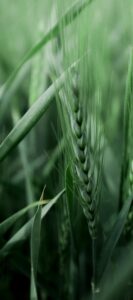The living word –
What is living Word –
The organism which grows and has ability of reproduction , sense environment , metabolism, etc are known as living organism
What are characteristic of living organism –
1) Reproduction
2) Metabolism
3) Organisation of body
4) consciousness
living word – Binomial Nomenclature –
The System of providing a name with 2 component ( 1) the generic name 2) specific epithet ) is called Binomial nomenclature
Ex – Mango
the scientific name of mango is Mangifera indica
Mangifera – it represent Genus
indica – it represent species or specific epithet

https://biosimplified.com/shahu-college-screening-test-syllabus-2024/
Universal Rules of Nomenclature –
1 Biological names are mostly in Latin , they are mostly written in italics
they have their origins in Latin
2 The 1st word in Biological name indicate the ” Genus” and second Name or Epithet indicate ” Specific Epithet ”
3 Both the words in a biological name when Handwritten are separately underlined or Printed in Italics to indicate their Latin origin
4 The first word of the genus is always a Capital word , while the first word of Specific epithet is small word
Classification –
What is classification –
it is a process by which anything is grouped into convenient categories based on the some easily observable characters
Taxonomic categories –
a) Species –
species are the organism of particular kind or type whose members can Interbreed among themselves and can produces fertile young ones
or
a group of individual organism with fundamental similarities are called as species
b) Genus –
it is a group of related species which has more character in common as compare to species
Eg – 1) Tomato , Brinjal , and Potato – these are 3 different species but all belongs to a common genus SOLANUM
2) The hill crow and the house crow are 2 different species of crow but these 2 belong to the same Genus ” CORVUS”
c) Family –
a group of related genera with still less number or certain number of similarities or common characters as compared to genus and species
Eg – Felidae –
it is a cat family
it indicate genus tiger , lion, and domestic cat

d) Order –
a group of related Family constitute order
there are few similar character
Eg – Carnivora
Carnivora –
order carnivora includes Family Felidae ( cat family) and Family Canidae ( Dog family )
e) Class –
Class is formed from related orders
Eg – Mammalia
Order Primata include monkey, gorilla and gibbon is places in class Mammalia along with order Carnivora
f) Phylum –
Related class Constitutes the phylum
it is the largest division in classification of plants and animals
Eg – Phylum Chordata
g) Kingdom –
phyla constitute the kingdom
it is the largest division of living organism
Extra –
The word Species is is given by John Ray
Carl Linnaeus – carl Linnaeus wrote 2 book
- Species Plantarum
- Systema Naturae
Key –
The keys are based on the contrasting characters generally in a pair called Couplet
it represent the choice made between two opposite options
each statement in the key is called a Lead
an organism can be identified easily by selecting and eliminating the character present in the key
Polynomial System of Nomenclature –
in this naming system there is more than 2 words
Trinomial System –
this system is contain 3 words
the 3rd word indicate Sub species while the first 2 are as same in binomial nomenclature system
Herbarium –
it is a store house of collected plant specimen that are dried, pressed and preserved on sheets
Codes of Biological Nomenclature –
to avoid errors while makin g biological Nomenclature there are 5 codes of nomenclature as follows
- ICNCP – International code of Nomenclature for Cultivated Plants
- ICVN – International Code of Viral Nomenclature
- ICBN – International Code of Botanical Nomenclature
- ICZN – International Code of Zoological Nomenclature
- ICBN – International Code of Bacteriological Nomenclature
Taxonomical aids –
it includes following technique which are useful for identification and classification of an organism
1 ) Herbarium
2) Museum
3) Keys
4) Botanical and Zoological parks
Biological Names of some important organism –
- Man – Homo sapiens
- Mango – Mangifera indica –

Mango - Wheat – Triticum aestivum

Wheat - House fly – Musca domestica
- Cat – Felis domesticus
- Honey bee – Apis indica
- Cobra – Naja naja
- Pineapple – Ananas comosus
- Lentil – Lens esculenta
- Pigeon pea – Cajanus cajan
Scientist and Discovered terms
1) Class – given by Linnaeus
2) Order – given by Linnaeus
3) Family – given John ray
4) Genus – given by John ray
5) Species – given by Joh ray
6) Taxon – first introduced by ICBN
